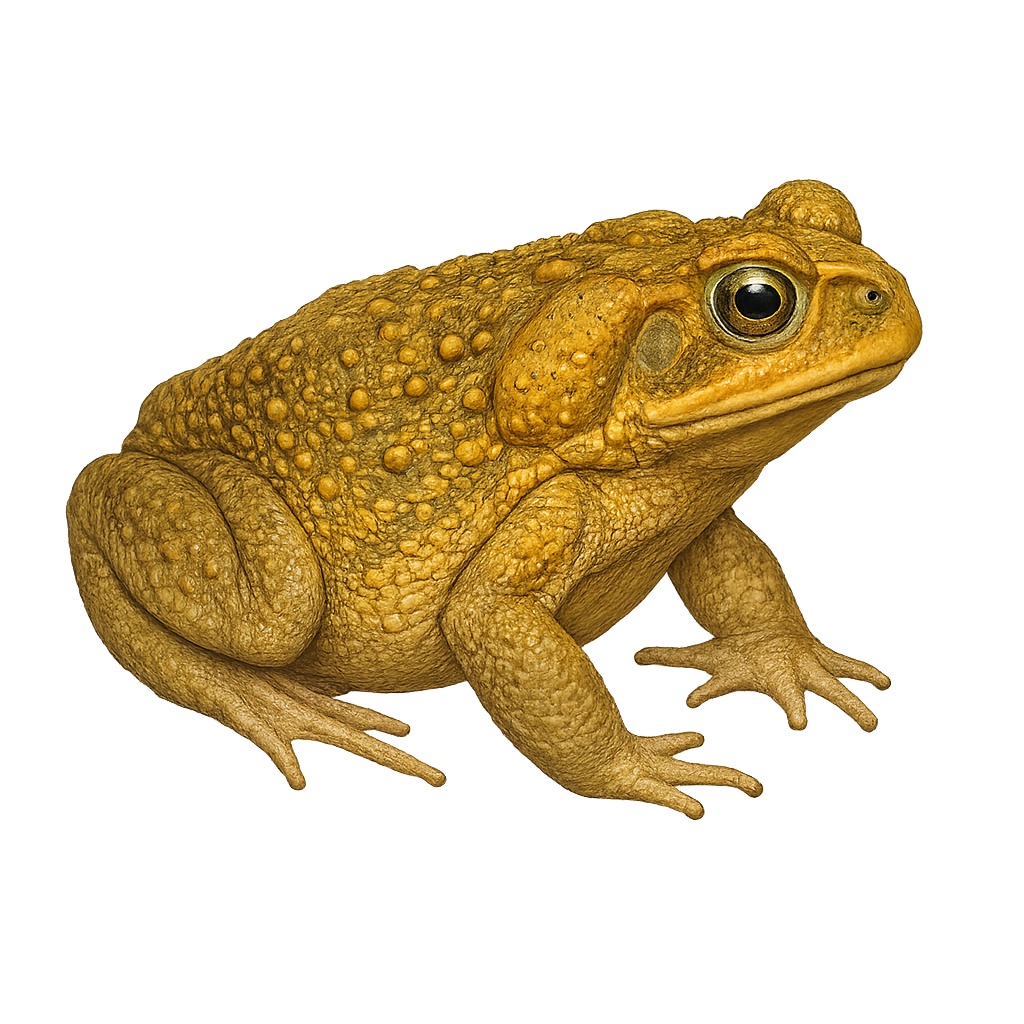Your wildlife photography guide.
Explore the cane toad in detail, study its behavior, prepare your shots.
Where to observe and photograph the cane toad in the wild
Learn where and when to spot the cane toad in the wild, how to identify the species based on distinctive features, and what natural environments it inhabits. The WildlifePhotographer app offers tailored photography tips that reflect the cane toad’s behavior, helping you capture better wildlife images. Explore the full species profile for key information including description, habitat, active periods, and approach techniques.
Cane toad
Scientific name: Bufo marinus

IUCN Status: Least Concern
Family: BUFONIDAE
Group: Amphibians
Sensitivity to human approach: Tolerant
Minimum approach distance: 3 m
Reproduction period: March to April
Incubation: 2–7 jours
Births: March to April
Habitat:
tropical forests, savannas, agricultural areas
Activity period :
Mainly active at night, generally discreet during the day.
Identification and description:
The cane toad, or Bufo marinus, is a large amphibian native to Central and South America. It can grow up to 24 cm in length and weigh over 1 kg. Its skin is rough and covered with glands that secrete a potent toxin used for defense against predators. This nocturnal toad primarily feeds on insects but can also consume small animals. Introduced in several regions to control agricultural pests, it has become an invasive species, notably in Australia, where it has caused ecological imbalances. Its ability to adapt to various environments makes it a fascinating subject of study for biologists.
Recommended lens:
Macro – adjust based on distance, desired framing (portrait or habitat), and approach conditions.
Photography tips:
To photograph the cane toad, it is advisable to use a macro lens to capture the details of its textured skin and expressive eyes. Shoot at night when the animal is active, using a headlamp to spot it without dazzling it. Approach slowly to avoid scaring it and use a tripod to stabilize your camera. Experiment with angles and perspectives to highlight its impressive size and natural environment.
The WildlifePhotographer App is coming soon!
Be the first to explore the best nature spots, track rutting seasons, log your observations, and observe more wildlife.
Already 1 432 wildlife lovers subscribed worldwide

